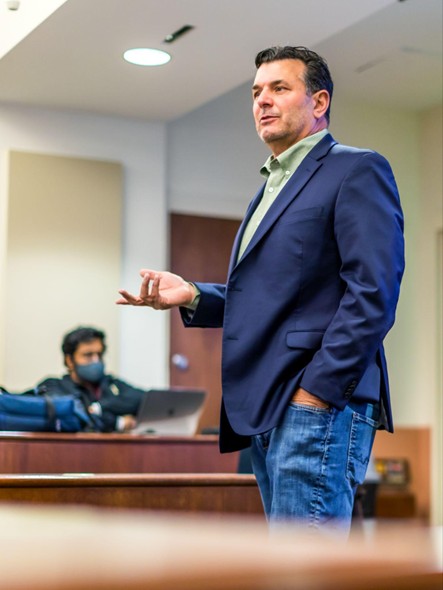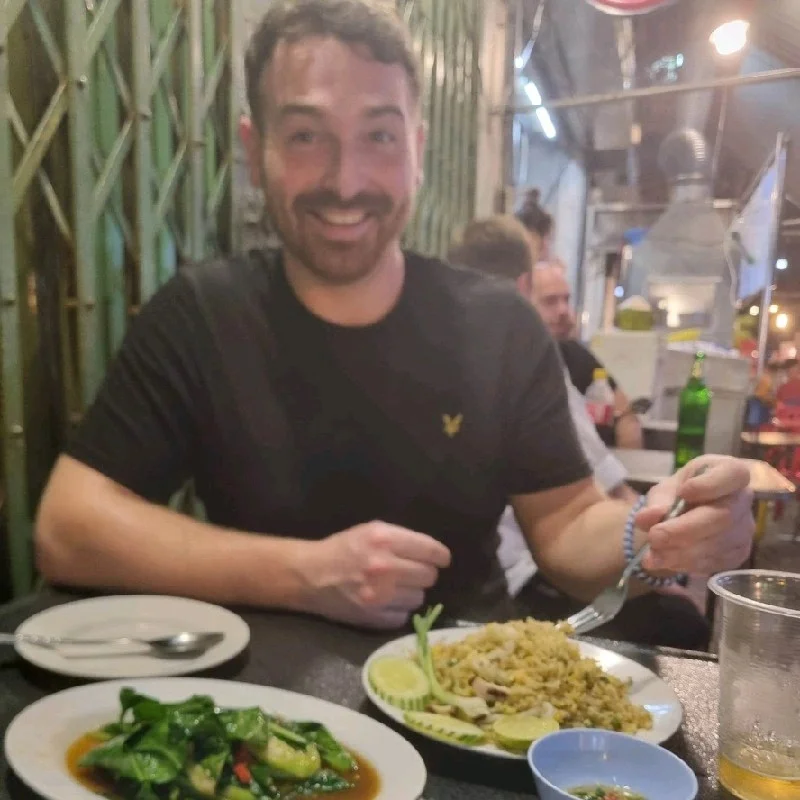Construction companies face exponential challenges as their project portfolios grow. Most firms struggle to maintain quality standards while scaling operations, creating a $9.87 billion market for construction management software that experts project will reach $21.04 billion by 2032. Chris Rapczynski, whose firm Sleeping Dog Properties has completed over $500 million in construction projects across three decades, has developed systematic methods for large-scale project management that avoid this common pitfall.
Construction project management services constitute a $296.1 billion market in the United States alone, with 429,000 businesses competing for projects. Yet construction firms face unique obstacles in process standardization due to project variability, site-specific conditions, and regulatory differences across locations. Each project presents distinct requirements, demanding scalable strategies that prevent quality degradation as volume increases.
"Our disciplined process is what gives us some strength and accountability," Chris Rapczynski explains about Sleeping Dog Properties' methodology for project management. "We deliver quality with the spare-no-expense mentality so that there's never a project out there that we've done that's not great."
Rapczynski's philosophy stems from recognizing construction's inherent unpredictability. "A mentor of mine said to me a long time ago, take everything one day at a time because construction is a little bit different than many things in life," he shares. "Running a company is in perpetuity, chaotic, and evolutionary and change and always moving." Rather than fighting this reality, Sleeping Dog Properties has developed processes that accommodate unpredictability while maintaining consistent quality standards.
Building Systematic Processes for Unpredictable Work
Construction quality management requires careful balance between standardization and flexibility. Sleeping Dog Properties addresses this challenge through systematic documentation, standardized checklists, and quality control protocols that adapt to project-specific requirements while maintaining consistent execution standards. Such a methodology has enabled the firm to manage substantial project volumes without the quality degradation that often accompanies growth.
Modern construction management software adoption has accelerated significantly, with the U.S. market growing from $154.6 million in 2022 to a projected $253.3 million by 2028. However, technology alone cannot solve quality management challenges. Sleeping Dog Properties combines digital tools with systematic human processes that ensure consistent outcomes across diverse project types and scales.
Construction projects range from luxury residential renovations in Boston's historic neighborhoods to boutique commercial spaces and distinctive hospitality ventures. Each requires different expertise, yet Sleeping Dog Properties maintains quality consistency by applying standardized protocols adapted to specific project needs. Such versatility across sectors has contributed to the firm's ability to complete projects exceeding $500 million in value while maintaining its reputation for excellence.
Human Capital Investment as Quality Foundation
Construction industry data shows a 36.4% failure rate within five years, illustrating the challenges facing firms attempting to scale operations successfully. Chris Rapczynski attributes Sleeping Dog Properties' sustained success to deliberate investment in human capital and systematic team development that enables quality maintenance across growing project volumes.
"The people, I think we have great humans here," Rapczynski emphasizes. "The human stock of our company is held in the highest regard." Such a people-focused philosophy manifests in compensation packages that exceed industry averages, comprehensive training programs, and retention initiatives that build institutional knowledge over time.
Rapczynski highlights three principles that guide his team development: communication, competency, and cleanliness. Communication ensures everyone involved in a project shares the same understanding and expectations. Competency involves presenting the best candidates available in the market, which proves costly but valuable. "I feel like competency is underrated, underappreciated until it goes wrong," he notes.
Perhaps most distinctive is Rapczynski's emphasis on cleanliness. "If I threw a bunch of popcorn down on the carpet and asked you to find me the two white wire nuts that were there, the popcorn would camouflage the wire nuts," he explains. Such attention to jobsite organization reflects the company's overall commitment to quality and professionalism.
"We've been in business for 30 years, so we've been delivering sustained excellence in construction for a very long period of time, and so we have great depth in that way," Rapczynski notes. Such longevity reflects business success and the effectiveness of team development methods that retain skilled professionals and build institutional capabilities over time.
Construction project management requires coordination across multiple specialties, from design professionals and project managers to skilled tradespeople and quality control inspectors. Sleeping Dog Properties' strategy emphasizes developing internal capabilities rather than relying entirely on external contractors, creating consistency in execution and quality standards across projects.
Technology Integration and Resource Management
About two years ago, Sleeping Dog Properties began preparing for artificial intelligence integration into white-collar business functions. "We do know in order to be the most competitive that we can be, we have to be prepared to and specifically seeking out adopting new technologies that will leverage some of that brain power," Rapczynski explains.
Sleeping Dog Properties' technology integration extends beyond project management software to encompass digital documentation systems, mobile inspection tools, and communication platforms that enable coordination across multiple concurrent projects. Such systems provide the scalability necessary for managing substantial project volumes while maintaining quality oversight and client communication standards.
However, technology serves as an enabler rather than a replacement for human judgment and relationships. Construction management software market growth to $34.49 billion by 2032 reflects industry recognition that systematic methods for quality control, documentation, and process management become essential as project portfolios scale.
Chris Rapczynski identifies resource access as a critical competitive advantage that enables Sleeping Dog Properties to maintain quality standards across substantial project volumes. "We represent and have the communication of all of the suppliers and all of the material men and all of the subcontractors that make us a formidable challenge to any of our competitors," Rapczynski explains.
Construction projects face inherent risks related to material quality, delivery schedules, and subcontractor performance. Such risks multiply as firms manage multiple concurrent projects, potentially creating cascading effects that impact overall portfolio performance. Sleeping Dog Properties addresses these challenges through long-term relationships that provide preferential access to quality materials and skilled subcontractors.
"We probably spend $10 to $15,000 a year in t-shirts that we give away," Rapczynski notes, describing the firm's strategy for building relationships throughout the construction ecosystem. "The subs want the shirts, the guys want the shirts, clients want the shirts—it's just very viral the connectivity here." Such attention to relationship building reflects recognition that construction success depends on collaboration across multiple stakeholders.
Sleeping Dog Properties' methodology for resource management includes vendor qualification processes, performance monitoring systems, and partnerships that ensure consistent access to quality resources across multiple projects. Modern supply chain management requires sophisticated coordination capabilities that balance cost considerations, quality requirements, and delivery schedules across multiple concurrent projects.
Risk Management and Adapting to Challenges
Managing $500 million in construction projects requires comprehensive risk management strategies that identify potential quality issues before they impact project outcomes. Chris Rapczynski's methodology for risk management emphasizes proactive identification and systematic response to potential quality issues.
Construction industry experts recognize that quality problems typically cost 5-10 times more to correct after project completion than during construction. Sleeping Dog Properties has developed quality assurance protocols that include regular inspections, systematic testing, and documented corrective action procedures.
"We might not make a profit in that job or this item, but we're happy, we have good lives," Rapczynski explains about the firm's philosophy for maintaining quality standards even when faced with challenging economic conditions. "Those are the important balances that I focus on and I think that resonates with the clients."
During the COVID-19 pandemic, Sleeping Dog Properties confronted some of its most formidable challenges. "I don't know one person who's not felt the pain of the pandemic," Rapczynski acknowledges. "We have to be creative." Sleeping Dog Properties' depth of suppliers and skilled tradespeople allows for flexibility when facing disruptions. If one material isn't available, alternatives can be sourced. If a team cannot perform a specific task, alternative methods are developed.
"We've really tried to lean up our operational business format and do more with less, try to be flexible for people's lives and be adaptable to change and not let that change be a moment of stress," Rapczynski explains about the firm's philosophy for managing industry challenges while maintaining quality standards.
Such adaptability stems from the systematic methods for process development, human capital investment, and resource management that Rapczynski has refined over three decades. Construction management software adoption continues accelerating as firms recognize that systematic strategies for quality control, documentation, and process management provide competitive advantages that justify investment costs.
Chris Rapczynski's formula shows that systematic management strategies addressing the full spectrum of challenges facing large-scale construction operations can enable substantial growth without quality degradation. Through three decades of operation and over $500 million in completed projects, Sleeping Dog Properties has proven that comprehensive systems can maintain quality standards while achieving significant scale in competitive markets. Rapczynski's success lies in combining disciplined processes with human expertise, technology integration, and strong relationships throughout the construction ecosystem.














